| Intensives |
Classes |
|
|
|
Musicians |
| Malcolm Manning |
Tuesday |
Wednesday |
Friday |
Saturday |
Gabriel Rivano |
| Daniel Lepkoff |
Andrea Fernandez |
|
Gilles Estran |
Paul Langland |
Javier Alcántara |
| Patricia Kuypers |
Gabriel Forestieri |
|
Camillo Vacaleber |
Philip Smith |
Richard Kim |
| Dieter Heitkamp |
Lalitaraja |
|
Kathy Crick |
Timea Györke |
William Woolf |
| Andjela Doni |
Brad Stoller |
Bettina Helmrich |
|
Cheryl Pallant |
Xavier Fassion |
| |
Jeff Wallace |
Cyrus Khambatta |
|
|
|
| |
Catherine Lessard |
Fernando Neder |
|
|
|
|
|
last update 29th of April 10 |
|
|
| INTENSIVES |
|
|
|
|
|
|
| |
| Malcolm Manning |
UK/FIN |
|
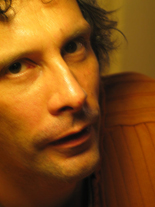 |
I am a somatic movement researcher, educator and performing artist. Movement is life and just about any situation can be analysed in terms of what moves, how, where, when and with what quality - I am fascinated by how people move and by how I move, both alone and in relation to others – more info at www.movetolearn.com |
|
| Improvising Contact Improvisation |
|
“When am I truly improvising CI?” This is a lab-like workshop intensive in which I’d like to share some of my attempts to answer that question through exploring what I call "restricted choice scores". It is intended for teachers and experienced dancers (3+ years) of CI.
I first identified this category of scores among common exercises used to teach CI: head-to-head, light touch, rolling point of contact, etc. I always liked these scores as ways to learn and teach CI since, while they direct us towards particular vocabulary, it is revealed through our own exploration rather than given as ready-made tricks and moves to be learned. They still have the capacity to surprise me.
I started to explore a wide range of "restricted choice scores" and now use them extensively in exploring and teaching CI. These scores range from the simple and obvious, to the esoteric, awkward and downright weird. What I've found is that, besides revealing particular vocabulary, in general they promote a state of being where I need all my resources to focus on solving the moving puzzle of the present moment. This to me has the character of contact improvisational mind. One flavour of it at least.
We will begin this intensive through an exploration of the simple head-to-head dance. From here, I'll introduce some scores that I've discovered and enjoy. In doing so, I hope to clarify how I've been working with and thinking about these scores. As the intensive progresses, it will become more like a lab where you'll be invited to experiment with creating your own scores. Throughout, we'll be watching each other dancing and dialoguing on the improvisational nature of CI as revealed through our exploration of these "restricted choice scores". |
| Daniel Lepkoff |
USA |
|
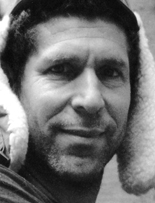 |
Daniel Lepkoff is a dancer maker, performer, and teacher known for bringing the process of living movement into the studio and onto the stage. He sees dancing as the imagination acting through the body. His work views movement as a physical dialogue with the environment.
In the early '70's and into the '80's he played a central role in the development of Release Technique with Mary Fulkerson and Contact Improvisation with Steve Paxton.
Over the course of more than three decades he has looked closely at the interweaving of sensation, perception, and action arising in the body's ever present interactions with its' environment and developed dance techniques for practicing and bringing this material onto the stage.
Daniel is one of the founders of Movement Research in NYC.
He writes and makes video/films documenting various aspects of his approach. For more information goto: www.daniellepkoff.com |
|
CONTACT IMPROVISATION: A Question
|
|
From the point of view of a spectator, Contact Improvisation is a duet form. From inside the dance, it is a solo form. Only you can assess your own physical circumstance and compose a response.
The underlying technique needed to prepare for and survive the surprises of a Contact Improvisation duet is to pose and maintain a question within the body:
•What is going on when I move?
•Where is my center?
•Where is down?
•What surfaces of my skin are being touched or touching?
•Which of these surfaces offers support?
•Where do I think I am going?
•Where am I able to go?
•What am I not aware of?
...and so on
This workshop will offer tools and situations to practice reading information from your environment and composing your response. The nature of my work is to delve into detail, it is inside of the details of our present moment that the dancing lives. |
| Patricia Kuypers |
Belgium |
|
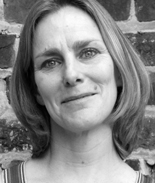 |
Patricia Kuypers decided to dedicate to improvisation and Contact Improvisation after her meeting and collaboration with Steve Paxton in the eighties. For 20 years she developed a resource center, Contredanse, to invite artists for exchanges and she published a magazine and books about dance in the field of improvisation and creative process in relation with others art and science disciplines. She is involved in personnel and collaborative dance projects that she presents all over Europe in theater, improvised music festivals, alternative places and studios. She teaches also extensively improvisation and Contact Improvisation, as well in small venues as in dance institutions, higher school for dance or visual art as La Cambre in Brussels. Her last artistic works with her partner Franck Beaubois were engaged in interactive systems, using the video feed-back and delay as sources of dance explorations and performances. Patricia also have a yoga and a shiatsu practice and reserve time for research and writing on dance improvisation. |
|
| MODES OF ATTENTION |
|
My recent research in solo improvisation drove me to be more and more conscious and attentive to what's happening to my focus during the warm up and during the dance with a partner. As a way to modulate my tone, as well as a way to perceive, the mode of attention I activate is determining what is available for my perception at each moment. It can be my capacity to deepen a very precise physical exploration, to keep with something for a long time, or to accept my state of dissipation and even play with my nervousness. Observing my inner state, accepting it and bringing some tools to focus, center, play, dialogue with myself before to come in contact and relation with a partner is a basic practice to cultivate ways to get to readiness.
In this workshop time I will propose to experiment with our states (of body / of mind) to awaken the right quantity of alertness and relaxation we need to open our senses to what's there at each moment and stimulate the capacity, humor, inventiveness to answer creatively to what we feel. Each day will bring a new entrance into a state of listening, beginning sometime with a quite physical and energetic warm up, and sometime, observing and tuning the senses before to go to movement practice. Time will also be provided for exchanges and questions. |
| Dieter Heitkamp |
Germany |
|
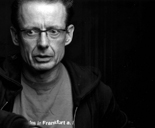 |
has been deeply involved with studying, teaching and performing Contact Improvisation for over 30 years. He is Professor for Contemporary Dance, directs the Department for Contemporary and Classical Dance at the University for Music and Performing Arts in Frankfurt a. M.(www.hfmdk-frankfurt.de) and is a member of the board of directors of Tanzlabor_21 (www.tanzlabor21.de). From 1978 until 1995 he has been one of the artistic directors of Tanzfabrik Berlin (www.tanzfabrik-berlin.de). His choreographies for Tanzfabrik have been presented througout Germany, Europe, Canada, the US, Japan, Hong Kong, Brasil and Russia. He has also choreographed for Ballet Frankfurt, the Ballet of the State Opera Berlin and for Theater and TV. Since 2001 he has developed several lecture performances combining theory and practice, movement, text, livemusic and video. |
|
contactencyclopedia_dancing is (not) writing – Exploring ROTATION and other issues to be found on the way
|
|
| Since four years I have been cooperating on different artistic and pedagogic projects related to Contact Improvisation, researching basic CI principles in the dictionary of delight, perception and the use of the senses in the School of sensitivity or in Moving from the skin, issues of boundaries or the Politics of Dancing. Lately I have been collaborating with Norbert Pape on creating www.contactencyclopedia.net, an online archive about CI. Verbalisation and visualisation of principles and expressions being used in the transmission of CI have become a major focus of my research. For the Freiburg Intensive, which is open for all levels, I would like to offer ROTATION as a point of departure. A rotation is a movement in a circular motion, around a center/ a point, or a line/ an axis. Is the axis of rotation going through the center of the body, its periphery, or is it outside of the body? When I spin, is the space spinning around me? How about momentum, spirals, rolls, double helix, Round Robin and other cyclic changes? By exploring, experiencing and reflecting on rotation we might stumble over some edges. Hopefully questions will arise, different perspectives will be discovered, which will open up new paths of communication and feed the dancing. |
| Andjela Doni |
Russia |
|
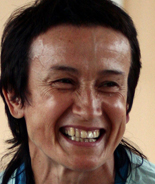 |
Angela Donii is a dance improviser, choreographer and a teacher oriented to contact improvisation and contemporary dance. She was born in Kishinev, Moldavia. She was educated at the High School of Culture, St-Petersburg. After graduation in 1985, she was a theatrical choreographer for 10 Years. Since 1999 she is living in Moscow, and teaching Contact Improvisation, Improvisation and Movement Development.
Since September 2006 she has been the organizer and leader of a project of research, experiment and exchange which aims to support and develop the teaching and performance of Contact Improvisation and Improvisation in Moscow. She organises the yearly, nine day, International Contact Improvisation and Performance Festival in Moscow which includes an improvisational performance night in a central Moscow Theater. Angela says
”I can not say I teach Contact. I share Contact Improvisation, I share my self, I share what my teachers taught me, my dance…. tea…” |
|
Legs like arms and arms like wings
|
|
When I teach I offer only those things which I know how to dance and love to dance. Observing my dance I discover my endless curiosity for spirals in movement, and my aspiration to be light, to fly and to feel my legs and arms like wings.I have recovered my childhood habits of creating relations with other people, such as trust, sincerity, openness and healthy selfishness. I am very interested in keeping my dance vivid and live and, of course, to keep human touch in it. We will use parent -child patterns to look for the natural instinctual reactions, embedded in the body, to support somebody and to be lifted. We will build up the sense of structural support through the skeleton in order to be able to take physical risks. We are going to explore the connection between the limbs and the center, and use it while dancing on the floor, in the air, and with a partner. During this course I wish to reach unusual places by entering unknown trails in our dance, meet our limitations, and to find safe ways to go beyond our boundaries, in solo, with a partner and the group.
Qualities which I would like to awake and integrate into the dance are:
• Initiation and surrender
• Inertia as a source of energy
• Resistance and following the flow
• Risk and trust.
I love the reality of dance; the floor, my body and partner’s body, gravity and weight. I love to move this reality between the sky and the earth. |
|
| |
|
|
|
| CLASSES |
|
|
| TUESDAY |
| |
| Andrea Fernández |
Argentina |
|
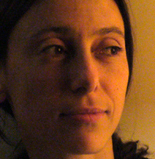 |
Argentine dancer and CI teacher. Co-founder of ”Danza Sin Límites Project”, working with people with and without disabilities in mixed-ability groups to express themselves through movement and dance. She has been involved in the practice of Contact Improvisation for the last twenty two years.
Actually she teaches in Buenos Aires in Instituto Universitario Nacional de Arte, Teatro Municipal General San Martín, Brecha – Dance Movement Therapy and in dance and theatre studios in Buenos Aires and the provinces of the country. |
|
Weight and lightness
|
Principles |
| With attention to sensation on weight and touch we will integrate to our dance physical abilities such as rolling, falling and giving and receiving weight. The Small Dance will be a preparation for the duet dance, gravity the support and the point of contact the leader. Tuning the listening, deepening the communication we will exchange weight and support with commodity, fluency and independance |
| Gabriel Forestieri |
USA |
|
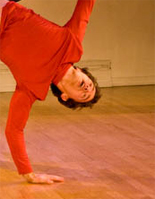 |
Gabriel has taught contact at Carnegie Melllon University, Hollins University, Joffrey Ballet School, and at NYU – where he is currently teaching. As the Choreographer/Director of projectLIMB he is intent on connecting communities with their landscape, resources, and each other. www.projectlimb.net. His studies in Thai massage, martial arts, Qi Gong, and Gyrotonic/Gyrokinesis all greatly influence his dancing. |
|
| The Animal Body |
Principles |
| I began to think about the animal body after a biking accident. I was hit by two cars, flew off my bike, bounced into the car windshield, and upon landing on the ground rolled up to standing. In those few seconds, I could not think, yet my body responded perfectly. Afterwards, I continued to notice the most graceful and adept moments were when the intelligence of my body was free to act. ”The Animal Body” will journey into the layers of the body’s memory. The class designed to experience the record of evolution that is stored in our body. Participants will be guided in a physical experience of the evolution of the brain, beginning from the brain stem and moving through the mid-brain, the limbic system and working up into the cerebral cortex. Each phase of evolution contains states and limitations, which when explored, help us understand the layering of our consciousness and hopefully an exit from our usual patterning. |
| Brad Stoller |
USA |
|
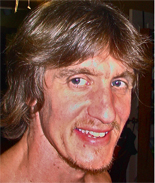 |
Brad Stoller has taught Contact Improv since 1983 in universities, festivals and workshops in the USA. He was trained in contemporary theatre and dance and studied with Growtowski and members of the Polish Laboratory Theatre. His work with Augusto Boal and Arnold Mindell has influenced him greatly. As a certified Alexander Technique teacher and Black Belt in Aikido he includes these principles in his dance teaching along with the techniques of early Contact training from S.F bay area in the early 80’s. |
|
| Avalanche: re-orientation |
Principles |
| In falling there is a re-orientation to the point of contact. The point expands into endless surfaces of quickly disappearing vortices. With a practice I call ”Lenses” we will explore this skill of continuously falling, through small practical steps, each step opening to increasing ability to stay connected to the mutual falling point. This practice is supported by grounding work based in Aikido, sensitivity skills from Alexander Technique, and mindfulness exercises from (ACT) Acceptance Commitment Therapy. |
|
|
| Lalitaraja |
UK |
|
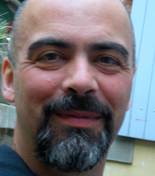 |
Performer, choreographer, teacher, Lalitaraja has danced in many dance companies, touring internationally. He discovered Contact improvisation by accident in the mid 80’s and within a few years he was performing contact. Major influences include Laurie Booth, Yolande Snaith, Kevin Finnan, Kirstie Simpson, Steve Paxton, Nancy Stark-Smith, Martin Keogh and many others to whom he feels immensely grateful. Lalitaraja has taught independently since 1990 and is currently a senior lecturer at Roehampton University where he has introduced contact improvisation onto the program. A lifelong meditator Lalitaraja was ordained into the Triratna Buddhist Order in 1998. |
|
Dancing in the Gap
|
Principles |
| This workshop focuses on mindful states of being and explores the gap between stimulus and response in our dancing. We will consider the standing meditation of the small dance and bring attention to the gaps between things in the play of fall and recovery. In open dancing we will look at the changes that take place in our dancing all the time and give ourselves small pauses in order to read the dance that we are in, in order to find its riches. |
| Jeff Wallace |
USA |
|
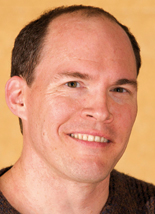 |
Jeff Wallace first discovered CI through Jaap Klevering and Jaana Turunen in Helsinki in 1986. Other early teachers were Nien Marie Chatz, Andrew Harwood, and Alito Alessi.. He has taught CI at workshops, festivals and universities across the US, Guatemala,and Ireland, working with populations as varied as special-needs children and professional opera singers. He is a co-founder and senior teacher in GLACIER- an organization dedicated to expanding the practice of Contact Improvisation in the Great Lakes region of the US, and takes great joy in mentoring new CI teachers and communities. |
|
| Explorations in Weight |
Principles |
| Utilizing blindfolds , we will focus our attention on specific gradations of weight sharing and the movement possibilities they unfold. Relying solely on proprioception and heightening our sense of immediacy, we attune ourselves to the subtleties of differing levels of contact and expand our awareness of the moment. We will discover the invisible pathways hidden by our assumptions of the possible and revealed by our unfiltered experience of touch, gravity, and momentum. |
| Catherine Lessard |
Canada/France |
|
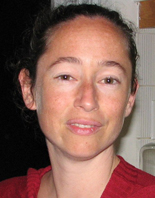 |
... transmits with passion and coherence the key principles of Improvisation and Contact Improvisation in Canada, France and USA. She has studied and performed with dancers of international reputation such as Nancy Stark Smith, Andrew Harwood, Kirstie Simpson, Patricia Kuypers and Benno Voorham. Since 2007, she has served as president of the Montreal Association for Contact Improvisation (ACI). Her pedagogy unifies both a sharp vision of art and a hungry curiosity for science. |
|
Rising Under Humans - The art of supporting, between earth and sky
|
Principles |
Being the channel between the floor and a partner requires a subtle mix of extension and anchoring. Ideally, it has nothing to do with strength. Exploring how to be this channel will be our common ground for this class.
A lift is nothing else than a weight transfer that is uninterrupted and broth to its full potential. As supports, we will practice to make clear offers, to absorb and rise up, and to keep spiralling. As flying partners, we will practice to extend, to lighten up, to mould and melt.
We’ll explore how a body structure can float with a delicate assemblage of tone and release, and recover from increased pressure without consequences |
|
|
|
|
|
|
| WEDNESDAY |
|
|
|
|
| Bettina Helmrich |
Germany |
|
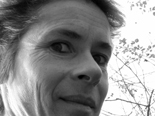 |
Bettina Helmrich studied architecture before started to dance. In the nineties she studied contemporary dance, performance and video at the European Dance Development Center in Arnhem/NL. Lisa Nelson, Lilo Stahl, Eva Karczag had an inspiring influence on her work. After finishing the school she is working as a freelance dancer, dancemaker and teacher for improvisation and contact-improvisation. The focus of her work is based on sensual and sensorial perception of the environment and the expression in movment. In her solo dance performances she is working with interactive video projections and voice. |
|
| Pauzing in a leap or breaking the pattern |
|
| In this class we will focus on breaking our movement pattern to increase the range of our movements. Through a refined sensual and sensorial perception we will find differentiated impulses that will transform the pattern. The transformation of the pattern in contactimprovisation can bring us to a playful dance which can shift between a narrativ and an abstract form. |
| Cyrus Khambatta |
USA |
|
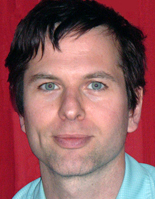 |
Cyrus Khambatta, has been integrating these forms for over 20 years creating choreography inspired and rooted in Contact Improvisation and commissioned by Contemporary/Modern and Ballet companies. He has performed at the New York and Washington D.C. Improvisation festivals, Seattle Festival of Dance and Improvisation, Kontakt Budapest, Bialystok Dance Festival, Dartington (U.K.) and many others. |
|
Contact meets Contemporary: Partnering with all parts
|
|
| This workshop will integrate CI with elements of traditional partnering to create new and underutilized pathways in the body-to-body dialogue that are still intuitive and instinctual. In the CI realm, the workshop will focus on decentralized use of anatomic structural elements of the body to create more highly articulated, subtle and expanded surface awareness and multi-sensorial tracking. In the contemporary dance lexicon, we will address more traditional dance aspects by emphasizing recognition of inner emotive sensations as we explore extension, line, awareness of body shape, weight support patterns and inter-body architecture. And finally we will source from both to examine a palette of different ways of creating, crafting and experiencing a movement dialogue with a partner. |
| Fernando Neder |
Brasil |
|
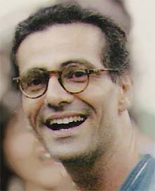 |
Involved on teaching and spreading the form since almost 20 years. Along this time, he participate as teacher and mover in Festivals, workshops, companies training, organization of jam sessions in many different cities in Brazil and abroad: Chile, Spain, Israel, Italy, Holland, Romania & Russia. He is the founder of Contact in Rio. (www.contactinrio.jimdo.com)
At his Studio, (www.corposeguro.jimdo.com) reference of C.I. in Rio, Fernando receives groups as well individuals for training and artistic advice and organizes a Contact jam monthly. |
|
ORGANIC CONTACT - Organic Music & Contact Improvisation
|
|
| This work is a bridge that links Organic Music to Contact Improvisation. That bridge is explicit from the fundamentals of both systems, expressed by the search of the fluidity, the democratization of artistic creation, the refinement of the perceptions, the fully improvisation integrating touch, voice and movement, the discovery of a more authentic and deep communication. |
|
|
|
|
|
|
|
| FRIDAY |
|
|
|
|
| Gilles Estran |
France |
|
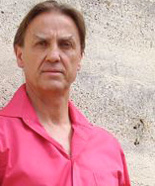 |
Dancer-Trainer-Alexander Technique Teacher. He is exploring and teaching Contact Improvisation since 1990. Through the study of human movement -coordination- and the practice of danced movements -creativity- Gilles Estran's teaching is based on a model of global being, balance and poise as fonctions of the mind. If F.M. Alexander's principles have become his essential support for pedagogy, Contact-Impro remains an unmatchable tool for bringing them to light and experimenting them. Then, Argentin Tango came and gave enhancement to an educational process based on « Touch » and « Connection ». |
|
| Between stimulus and reaction... |
|
… where the new possibility is revealed, and creativity is being worked out ... looking for the full « now »
We generally understand the importance of being fully aware at the very moment of action, but what exactly happens during all the moments between actions ? How do we recognize, travel our way through spaces and times between... two steps, two situations, two intentions... and get inspiration from them? Because Contact-Improvisation confronts us to a perpetually evolving environnement, to a true field of sensory disorientation, to a restrictive space for « old habits », it also offers us playful occasions of freeing ourselves from the « already known ». |
| Camillo Vacalebre |
Italy/Argentina/Brasil |
|
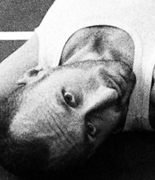 |
Camillo Vacalebre, Napoli, Italy, 1965. Embarked on the contact improvisation journey in 1989. Studied at the CNDO, Center for New Dance Development, after renamed EDDC, European Dance Development Center Arnhem, Holland, where he graduated in 1994. There he had the privilege of having Eva Karczag as a teacher and major inspiration during the four years of the program. Has been teaching Contact Improvisation for 15 years in academic institutions independent centers and festivals in Brazil, Italy, Denmark and Argentina. In 1997 Moved to Brasilia, Brazil. In 2004 moved again to Holland to train as an Alexander Technique teacher (2004-2007). Currently lives in Brasilia. |
|
| Thinking into activity. F.M. Alexander’s principles in Contact Improvisation. |
|
| The class aims at introducing ways to apply principles of the Alexander Technique to prevent loosing full length and width while dancing. We’ll explore buoyancy, tension/compression integrity and support in our anti-gravity stance. Through the observation of the very moment a decision takes place and the action is carried out, habitual responses that interfere with the organism’s inherent efficient coordination will be identified. Preventing undue responses will open the possibility of making new choices from a clear place. |
| Kathy Crick |
UK |
|
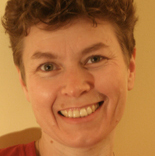 |
Kathy Crick encountered CI in 1982. For twenty years she has been teaching and sharing her enjoyment of the form and finding inspiration in artists such as Steve Paxton, Kirstie Simson, Miranda Tufnell and KJ Holmes. Her practice is also influenced by studies in education, psychology, shiatsu and somatic movement. Kathy currently teaches Contact Improvisation, Choreography and Performance at Laban and London Metropolitan University. She is a member of SOFt, a collective of artists with a mutual curiosity for exploring ensemble performance, Contact Improvisation and improvised music. |
|
| From fall to flow |
|
| We will explore falling as easeful acquiescence, playful invitation and invigorating physicality; the smallest falls, spreading and rolling, drop and rebound, pitching and lofting, streaming with gravity to find a moving connection to ourselves and to a partner. We will look at ways to refine tone and release in our movement, to follow momentum in contact and ride out falling as the undercurrent of flow. |
|
|
|
|
|
|
|
| SATURDAY |
|
|
|
|
| Paul Langland |
USA |
|
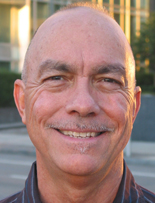 |
Paul Langland is a choreographer, dancer, teacher and innovator in dance for 37 years. He has been a Contact Improviser since 1972 when he studied with Steve Paxton and other founders. A New Yorker since 1973, Paul helped establish Contact there. Contact continues to inform his work at a core level. He teaches Allan Wayne Work, is an original member of the Meredith Monk Vocal Ensemble, and was in the Contact-based group Channel Z. Paul has worked with many artists in the USA and internationally, and he has toured his work widely. He is an Associate Arts Professor at New York University's Experimental Theater Wing. |
|
| What You Don't Know |
|
| Playing with perception, this class will explore and employ technical and creative aspects in Contact Improvisation. The class will include warm-ups to expand our appreciation of perceptual flow, especially through touch and sight, while dancing. Enhanced use of space and instant compositional choice-making will be studied to find fresh possibilities of Contact in solo, duet, and ensemble. We will look at how the senses delight in not knowing the whole story. As well as Contact. Paul's studies with Robert Ellis Dunn, and Body Mind Centering™, also inform this class. |
| Philip Smith |
Israel/UK |
|
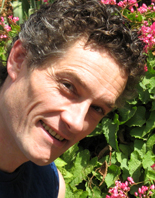 |
Philip Smith met Contact Improvisation for the first time in 1993 through K.J.Holmes. Inspired by workshops with Kirstie Simson, he began to teach in 1998. He will teach C.I. at the Rubin Academy of Music and Dance in Jerusalem this year. Last year he participated in "Meeting Ground: Earth" in Ulm, Germany, with artists from Israel and Germany. He is a member of Octet, a project of artists who seek to combine contact improvisation, music and text in performance. |
|
Watching and dancing
|
|
Hand, eye, head and spine cooperate effortlessly. We will exchange an eye massage with a partner, in order to see how the shared experience affects the connection to our partner. We will resource Barbara Dilley's Five Eye Practices. Other exercises explore the eye's ability to widen or narrow our field of attention, and the power of the eyes to communicate and visualise.
We will practice watching as an activity which brings awareness to the use of space, timing, and touch. It supports flow and presence, and invites playfulness and receptivity. Watching becomes a point of reference in improvised dances, and a compositional tool in performance. |
| Tímea Györke |
Hungary |
|
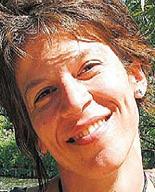 |
I am a dancer, teacher and therapist. I earned my degree in gymnastics training, physical education and physical therapy; last year I finished my studies in Psychodynamic Dance – and Movement Therapy. I am interested in the “psyche” of the movement. In 1990 I met Contact Improvisation which became my “life philosophy”. I have been teaching this form for 6 years for kids-parents (Family Contact) for teens and for adults. I am in the organizer and teachers team of the Hungarian CI Festival and events. As a member of the Workshop Company we investigate the connection among movement, improvisation, voice, text, dance theatre and performance. |
|
| Synchronic translation |
|
| In this class we investigate the connection between movement and voice, words, text. We listen how voice comes out from our body, how it is just an ”alternative” breath. We synchronize each other’s dance with voice and each other’s voice with movement. We also use words, text and gibberish. We play with gibberish as an improvised text. At the end we combine all of these with contact duets, trios and with group improvisation – and we’ll see who synchronize who with what… |
|
|
|
| Cheryl Pallant |
USA |
|
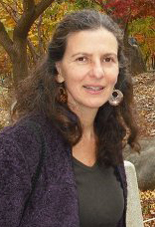 |
Cheryl Pallant studied with Steve Paxton, Nancy Stark Smith, Carmen Beuchat, Deborah Hay, Eiko and Koma, among others. She is author of Contact Improvisation: an Introduction to a Vitalizing Dance Form, as well as three poetry books, and four chapbooks. She has published worldwide in numerous print and online journals in poetry, fiction, and nonfiction, edited for Contact Quarterly, and critiqued dance for a Virginia newspaper. She combines dance and words for performance and print. She is co-founder of the Spring East Coast Contact Improvisation Jam in West Virginia and co-organizer for the Fall East Coast Contact Improvisation Jam. She is Visiting Assistance Professor in writing and dance at University of Tulsa, Oklahoma. |
|
Writing From the Body
|
|
This class uses Contact Improvisation techniques to generate somatically based writing. Exercises begin in movement and lead to writing that is connected to personal body rhythms and an authentic voice. Typically we write from precognition, thought not only preceding words but often dissociated from the body. The aim of this session is to bypass a cognitive approach to writing altogether and rely instead on integrative awareness, flow, sound, and imagery. Participants will access a deeper, resonant writing more closely aligned with their unique verbal expression. The resulting writing may be poetry, fiction, nonfiction, performative, or hybrid.
|
|
| |
|
|
|
| MUSICIANS |
|
| Gabriel Rivano |
ARGENTINA |
|
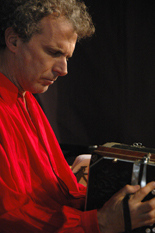 |
I'm a bandoneonist, flutist, guitarist and composer from Argentina. I inherited my bandoneon from my grandfather, Adolfo Perez Pocholo, who played with legendary names such as Firpo, Canaro and Gardel. I'm quite conscious of the tradition I represent but at the same time I want to be open for new possibilities and experiences. Since 1981 I performed in several countries in South America and Europe, as well as in Japan and Canada, with among other Cuarteto Cedrón, Rodolfo Mederos, Hermeto Pascoal, “Orquesta tipica de Roberto Pansera” and my own tango sextet. From 1987 I presented my own compositions on several prestigious stages. In 1997 the concerto for bandoneon, guitar and orchestra was performed in Buenos Aires. I also participated in several different films, recorded CD's all over the world and have been awarded for my CD “Tradición”. From 1999 on I have been arranger and first bandoneonist of the tango company “Tango, Vals y Tango” of Ana Mari Stekelman. Since 2001 I am touring frequently to Europe with bandoneon solo concerts. In 2007 I have been awarded with the 1st prize in an international competition organized by Secretaría de Cultura de la Nación Argentina with my “Concierto para Bandoneón y Orquesta”.
I'm dancing contact since some years now and for me it's a great experience to support jams as a musician. I see myself learning in the interaction of the improvisation with dancers. For me as musician it's very important to incorporate the silence as another element of the music. |
| Javier Alcántara |
SPAIN |
|
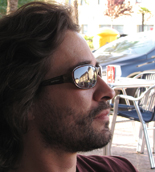 |
Musician, guitarist, composer, improviser, and music therapists. He plays guitar, piano, bass, drums, percussion, and effects. Degree in Jazz / Guitar and Master in Music Therapy. Has studied Jazz and Improvisation in Italy, France, Portugal, Spain, and New York. He has performed throughout Europe and America with Arturo Serra, Ari Hoenig, Phil Abraham, Hugo Alves, Hugo Antunes, Alexis Cuadrado, Peter Cortejosa, Perico Sambeat, Bruno Pedroso, Nelson Cascais, and Demian Cabaud. Recorded and co-produced his first album “Namouche” with Quartet Special. The album was nominated in the category of "Best Group / Artist" and "Best Album" at the Second Gala Extremeña Music Awards. He offers master classes, lectures and conferences in the University of Extremadura and Jazz Festivals on improvisation, creativity and history of Jazz. He is composing and performing music for dance/theatre companies and for the Contact Improvisation Jam organized by the association. He is artistic director and producer of the International Jazz Festival and the International Seminar Badajoz Badejazz.
Playing for a CI Jam for me is similar like playing in a Jazz Jam. Listening ... supporting ... space ... creating ... improvising ... interacting ... Being prepared for uncertainty, … out of the uncertainty of not knowing what will happen comes creativity. The music – dance relation works in the same way than touching bodies … the musician is listening to movements of the dancers body while he creates something of his own. The music is moving ... There is music in motion ...
http://www.myspace.com/javieralcantara
|
| Richard Kim |
USA |
|
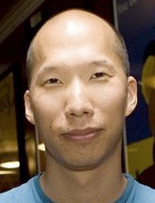 |
I have been playing music for about 28 years, and have been improvising actively for at least 12 years. I first started improvising with dancers about 9 years ago, and over the last 7 years, I have played for jams in Los Angeles; Chicago; New York; Toronto; Berkeley, California (USA); and Ann Arbor, Michigan (USA). I have been regularly dancing contact improvisation for more than 7 years, and teach a little in Ann Arbor. I play primarily viola, and play in an improvisation band in Ann Arbor, the Rug-Outs. I've played with virtually every Western instrument, including some rarer ones (recorder, turntable) as well as many non-Western instruments (shakuhachi, digiridoo). I also have training in violin, orchestral conducting, voice, and piano.
When playing for/with a jam or dancers, I seek to have music and dance relate to each other co-equally, moving together but each with its own integrity. I make offerings in my playing; I interject ideas into the space and see how dancers respond. I use silence often as a way to give the dance a chance to go where it wants to go. I will rarely lead the dancers, and will often stop playing so that I am not driving the dance. I actively and sometimes specifically respond to the dancers. I like to use the music to tell dancers on opposite sides of the room what other people are doing. Every now and then, I will take over, and use the music to bring the whole room together.
|
| William Woolf |
UK |
|
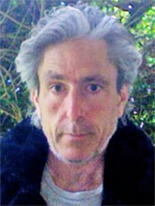 |
Music was my first love. By the time I left school I was gigging everything from classical to free improvisation through jazz, roots & soul. At university I got in to composition & electronic music & moved into record production & film composition through my 20s. Then I hit a brick wall. I'd started out playing music for people & ended up stuck in studios full of machines. Something was missing. So I went back to the beginning, shut up shop in London & went to live in the forest for 3 years, took on nature as my teacher. I listened, I sung, I moved, I felt, I lived, I learned. My practice involved a single rule: Notice the familiar & dive in to the unknown. From it’s initial focus on total immersion in the unknown, the long road of integration opened up, embracing the known from the ground of not knowing. I work & play with voice, body sounds, piano & live electronics.
When I'm invited to make music for C.I. I wonder how best to support this dance & these dancers, how best to follow with sound, how & when to open up new pathways & qualities of contact, how best to lead & follow with sound, how best to make space for the space.....? I wonder these & other things but once the dance is underway I just let it unfold, the flux of movement & stillness, sound & silence, tension & release. I listen to vibe, to texture, to tone, in the space & in the dance. Sometimes I'm called to fan the fire a little, sometimes to pour on water, sometimes to just be there with the dance & of the dance, a body of sound waves, surfing the creative edge. Playing for C.I. really invites me to stretch out, to trust, to surrender & to play with the full dynamic range of possibilities of sound & silence, movement & stillness. www.williamwoolf.co.uk
|
| Xavier Fassion |
FRANCE |
|
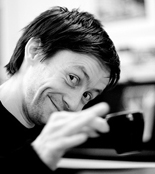 |
– Percussions, objects. „(Un)trained at the Conservatoire, I swiftly left the high way, taking side tracks that lead me to contemporary and improvised music, herbalism, contact dance (a rebirth), rock music, temperate forests and a couple of stereo microphones (a revelation). Significant experiences: - 10 days with Thad Wheeler of the Steve Reich Ensemble. - 1 month in Mongolia. - 3 years in a village of the French Jura Mountains. I play on skins, metal, wood, glass and found objects. Deeply influenced by fields recording I prefer the idea of making sounds more than playing music (even if it can be music), considering that making sound is setting up a landscape, establishing a topography.
For the dance, playing is energizing the air. Making sound is shaping silence more than filling the emptiness. It means to leave some space to the space and trust silence. So, I work on listening, on being aware more than keep on playing. I try not to drive the dance but almost to give it nourishment. I keep in mind that ears have no eyelids, so that dancers can’t avoid sounds. Also that - sounds creates an emotional state for the dancers. - dancers can listen to the sounds or just receive them. I consider sounds like animals which have their own behaviour, size, speed, character… Much more fast and invasive than dancers. They have no weight but can be very heavy. Sounds is acting! I think that the most important thing is to listen with my breathing and then to give with abandon.
|
| |
|
| |
|
|
|
|
|






